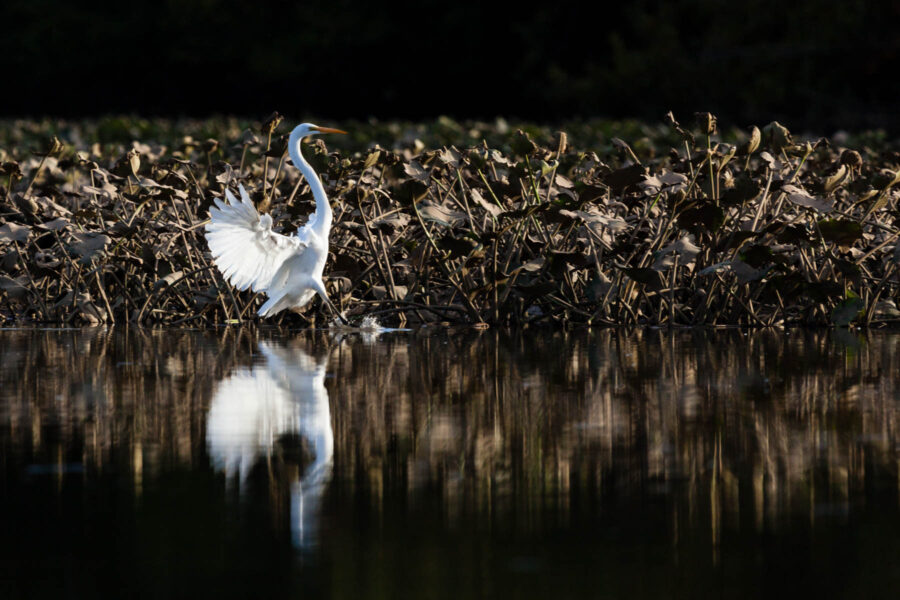$12.6 million in funding will support restoration across Chesapeake Bay region
Chesapeake Bay Stewardship Fund to support 44 environmental projects

Over $12.6 million in grant funding will support 44 environmental projects in the Chesapeake Bay region, restoring critical habitats and reducing pollution from cities, suburbs and farms. The funding, announced today at an event in Middle River, Maryland, comes through the Chesapeake Bay Stewardship Fund, which is administered by the National Fish and Wildlife Foundation (NFWF) and funded primarily by the U.S. Environmental Protection Agency (EPA).
13 projects will be funded by the Innovative Nutrient and Sediment Reduction Grants Program, which supports projects that reduce nutrient and sediment pollution in rivers, streams and the Bay. 31 more will be funded through the Small Watershed Grants Program, which funds on-the-ground restoration, habitat conservation and community engagement projects. The 44 projects will collectively leverage an additional $21.2 million in matching funds, for a total of almost $34 million to strengthen the health of the watershed.
Projects will restore habitat and protect waterways across the Bay watershed, which spans across parts of Delaware, Maryland, New York, Pennsylvania, Virginia, West Virginia and the District of Columbia. In Maryland, for instance, the Washington College Center for Environment and Society will install native warm season grass buffers for the benefit of bobwhite quail and restore wetlands to reduce non-point source nutrient and sediment runoff from agriculture land in the identified high priority zones of the upper and middle Eastern Shore of Maryland. The project will establish 285 acres of 100-foot minimum native grass buffers and 16 acres of wetlands.
In New York, the Tioga County Soil and Water Conservation District will restore 12 acres of wetlands, rehabilitate 5,000 feet of stream reaches, install 100 acres of riparian forest buffers and implement grazing practices, including cattle exclusion from 20 streamside acres and reduce nutrient and sediment loadings in the headwaters of the Chesapeake Bay watershed by building upon and expanding a regional scale implementation delivery system. And in West Virginia, the Eastern Panhandle Planning and Development Council will develop a comprehensive poultry manure management plan for West Virginia to reduce nutrient and stormwater runoff and erosion into the Potomac River watershed and ultimately the Chesapeake Bay. The project will expand the regional manure market and increase demand for poultry manure sourced from the Eastern Panhandle and Potomac Valley regions of West Virginia.
Officials announced the awards this morning at the Miramar Landing community in Middle River, Maryland.
Learn more about the awards or see a full list of all projects.

Comments
There are no comments.
Thank you!
Your comment has been received. Before it can be published, the comment will be reviewed by our team to ensure it adheres with our rules of engagement.
Back to recent stories